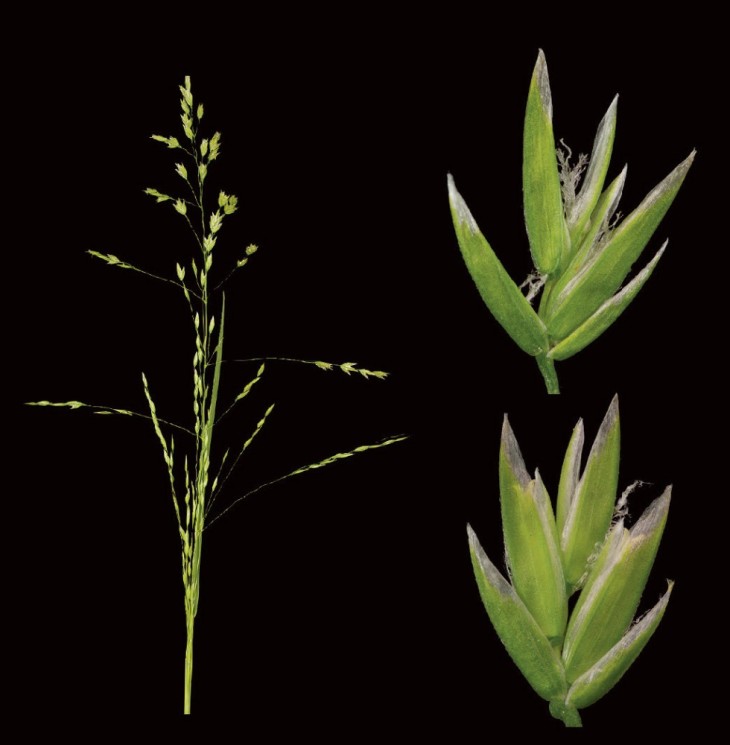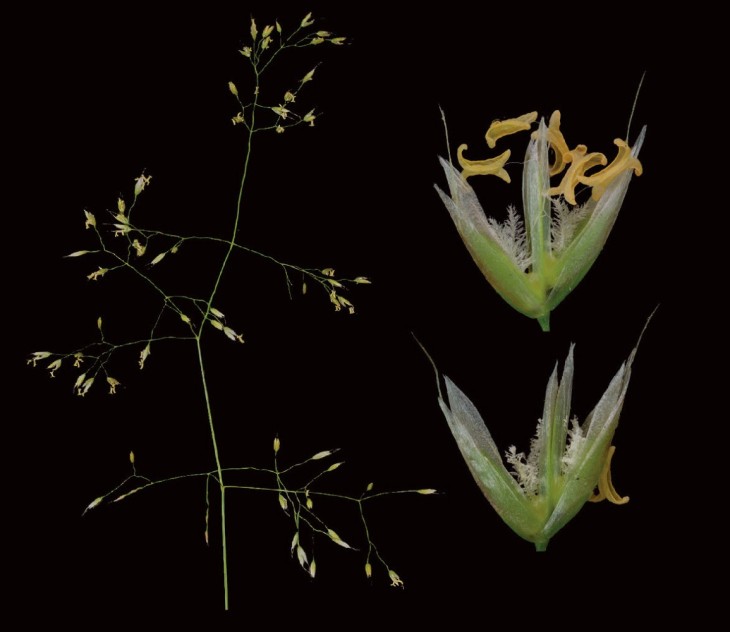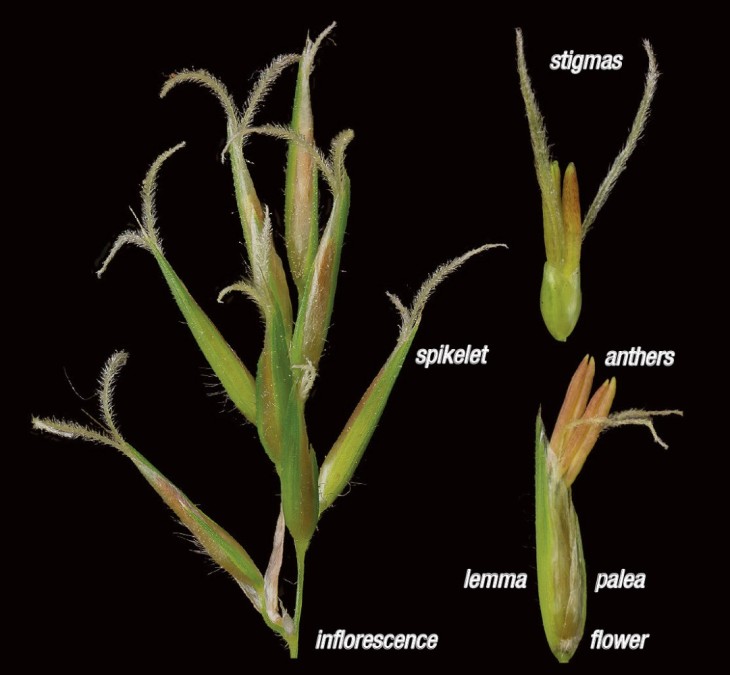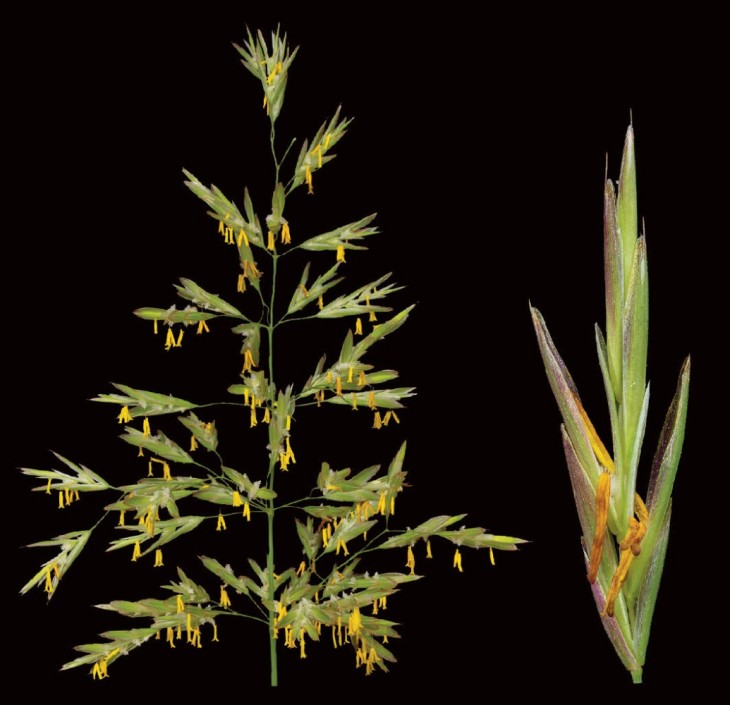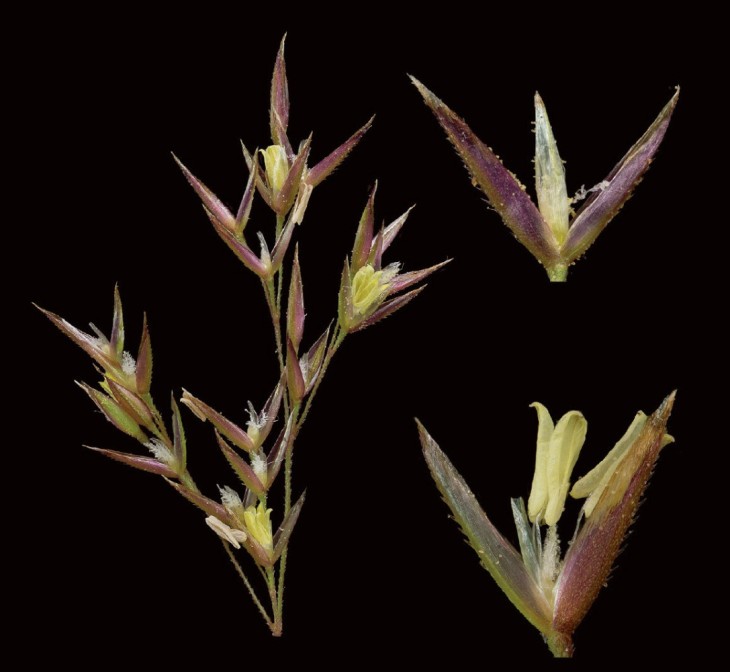The northern forest has about 195 grasses, of which 145 are native and 50 introduced. They are our second largest plant family, after the sedges. Our grassiest landscapes are farms and roadsides, with about 50 species, and river and lake shores, with about 40 species. Prairies, glades, and barrens, with 30 species, are also good; fertile woods, with 20 species, are surprisingly rich. The ex-farmland around my house, last pastured 50 years ago, has 25 species. The ravines and glades of Coon Mountain, in the eastern Adirondacks, have a delightful 17 species. We show eight of our commonest species here. The four on this page are native woodland species; their blooming period coincides with the spring wildflower season. The four on the opposite page are Europeans that were planted in meadows and pastures; their blooming coincides with the first cut of hay.
Grasses originated about 70 million years ago and achieved ecological dominance about 20 million years ago. Their flowers – small, wind pollinated, strikingly architectural – are a key to their success. Brett Engstrom and I are photographing them for the Atlas Project. We began this spring and expect that it will take three summers and over 3,000 images to get them all. The work is slow and tricky. But every day we see things we have never seen before. Each individual flower has anthers containing pollen, feathery stigmas that intercept wind-borne pollen, and two enclosing bracts, the lemma and palea. The individual flowers are grouped into spikelets, each of which is enclosed by two glumes and then grouped with other spikelets in an inflorescence. We think they are amazing. Please tell us what you think.



